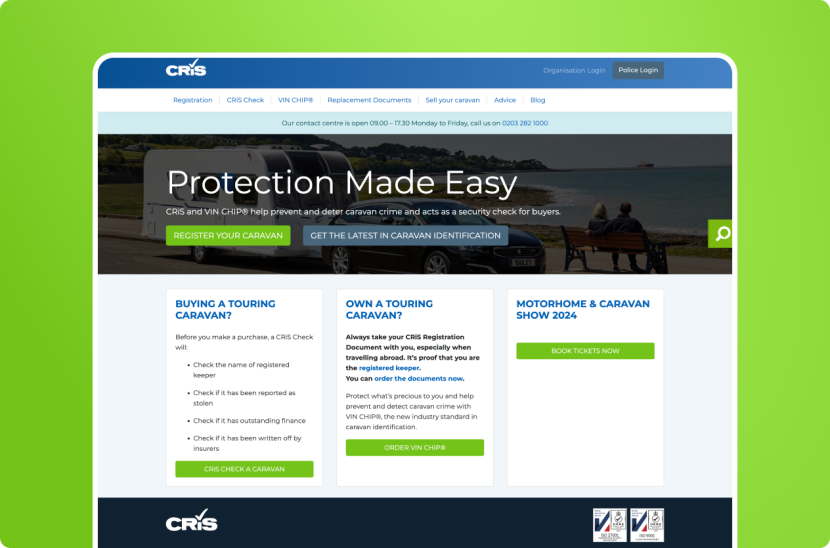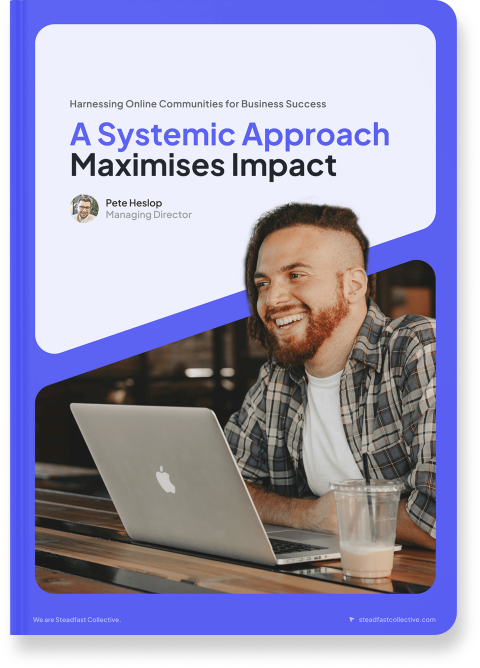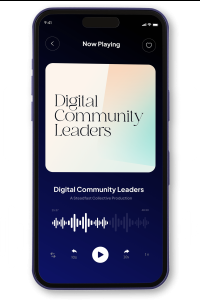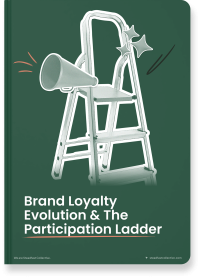A Systemic Approach Maximises Impact
Considering the interconnected nature of human society and online communities, a systemic perspective is crucial for business success. Holistically assessing the cumulative dynamics provides insight into the influence your online communities exert and how they can be orchestrated for desired outcomes.
GoPro's digital ecosystem serves as a prime example. It connects millions of outdoor enthusiasts across various platforms with tailored content and engagement opportunities.
An ecosystem approach also considers complementary business partners. The success of Nespresso is largely due to the ecosystem of coffee machines that use Nespresso. While Apple’s App Store success reflects the breadth of providers in its store (Jacobides, M. G., 2019).
How to Activate for Impact
Align your community approach with your organisational strategy while tailoring it for each platform based on community needs. Use our Digital Community Archetypes to guide your goals for each community-type.
GoPro in focus
GoPro's diverse communities serve various needs based on archetypes (including Ludas, Entitas Servitium, and Innovatio), delivering value beyond its products, enriching its reputation, and extending its influence.
Its presence on Reddit offers product support, whilst its Github community is for enthusiasts helping the brand innovate. YouTube and Instagram provide stunning branded content showing how GoPro “helps the world to capture and share itself in immersive and exciting ways”.

Platform planning
Once you have prioritised your community platforms aligned with your strategy where evidence of demand and the potential to create value with key stakeholders exists, you are ready to select the community platforms you will activate.
Consider your organisation's cultural maturity and resources, as well as your ethics and brand purpose.
Trailblazing examples like Lush's organic community approach and Harley-Davidson's Owners Group (HOG) showcase diverse community engagement strategies.

Lush in focus
Lush has moved away from paid social media media marketing to an organic community-based marketing approach. They no longer post on Facebook, Instagram, TikTok, and Snapchat due to ethical concerns about these platforms.
Instead, they foster word of mouth and organic community engagement online through events, partnerships, and collaborations with like-minded influencers. Lush’s community approach “replaces traditional advertising spend with customer-created assets that perform”. (Nosto, 2023)
The amount of user-generated content generated by Lush’s known as ‘Lushies’ has ensured their business performance has not suffered since stopping paid social (Keyles, 2023).
HOG in focus
HOG is the place where “Harley-Davidson Owners around the world, bound to the passion to ride, gather to celebrate. H.O.G.™ Membership provides access to a world of exclusive benefits to help you get the most out of your ownership experience.”
HOG is the prototype for the ethnographic term subculture of consumption, "a distinctive subgroup of society that self-selects on the basis of a shared commitment to a particular product class, brand, or consumption activity." (Schouten, J, Alexander, J, 1995).
Affinity with Harley Davidson’s products is so strong, the community helps fuel consumption. This phenomenon is the key reason to take a community focused approach. It is not just good for customers, it is good for business!
Brands, like Harley Davidson, seeking deeper engagement by hosting their own brand communities, need to select the right toolset.
Many third party platforms are based on subscription models that lock you in. Creating your own community platform is an alternative option. Platform selection can only be answered well based on a deep understanding of your requirements.
To learn when building a bespoke community platform is the way to go, read: Why should I build a bespoke community platform for my online community? Link to Steadfast article.
Regardless of the selected platform(s), activate communities for maximum impact. Communities don’t happen by magic, they need to be nurtured.
Stories Spark Brand Advocacy and Engagement
Storytelling is a fundamental and innate human need. People love telling and sharing stories that entertain or teach.
To fuel community engagement, share stories aligned with your purpose. Compelling branded content catalyses user-generated content, which may influence purchasing decisions (Nielsen, 2013).

GoPro’s stunning content seamlessly traverses multiple ludas communities ensuring its relevance whilst fuelling brand advocacy and interest. It fosters user generated content using branded hashtags like #GoProAdventure.
For non-profits, impact stories are an effective way to make your mission relatable, your outcomes understandable, and drive an emotional connection with your cause.
Events, applicable to both B2B and B2C brands, are another source of stories that foster conversations and connections within brand communities. Many fashion and beauty brands like Sephora capture exclusive events on film and then share the experience widely with fans in their digital communities.
Professional trade bodies and membership associations primarily focus on events, using online communities to keep members engaged in between. Listen to the Digital Community Leaders podcast with Richard Gott, the founder of Memberwise to find out more.
Design digital services that add value
Designing new digital services with community members is another great way to strengthen your organisation. The National Caravan Council (NCC) provides great inspiration.
National Caravan Council in focus
In 2022, the NCC launched the Central Registration & Identification Scheme (CRiS), a register for new caravans and motorhomes built by NCC member manufacturers.
CRiS is used by its staff, police, manufacturers and leisure vehicle owners to aid the recovery of stolen vehicles. Feedback on the digital service has been fantastic as it strengthens NCC’s value to members.

Lead With Good Governance
Online communities can make or break your reputation. Good governance shows you are living your values.
Consider how you will create a sense of belonging, foster psychological safety, and build trust so your community flourishes.
Establish clear participation guidelines, moderate content based on your guidelines, and involve community members in the governance process.
Active moderation and proactive engagement signals that the community matters, fostering a trusting, secure and thriving environment.
Learning to listen and address negative sentiment openly helps build trust within your community. Taking ownership publicly when things go wrong will bolster trust and loyalty further. Equally, celebrating success is more enjoyable when it is a shared experience.
If your social media governance has been lax, you may have dormant groups on platforms like LinkedIn. Based on your earlier audit, close any dormant groups redirecting members to community spaces you are actively managing.
Reward Participation
In most communities, activity is catalysed by the work of a few dedicated community organisers or managers. They work hard, especially at the beginning, to encourage participation by inducting new members, responding to comments and questions and reaching out to encourage contributions.
In some cases, the most active members of a community are likely to constitute 1% of the membership (Arther, C, 2010). This creates significant challenges for community managers to encourage and scale participation.
Community onboarding and activation plans help stimulate participation. To get the most out of your community, create compelling stories, and provide a schedule of events and activities. Empower your members to become leaders.
Smart Promotion
Actively promote your communities, cross-promoting them across all your community platforms and websites for greater engagement. Orchestrate your ecosystem using integrated marketing communications to avoid fragmentation and inconsistency. Provide assets for members and employees to share, turning them into an authentic promotional engine. They will in turn raise awareness and help grow your community.
Optimise Your Ecosystem
Regularly measure community impact based on goals set in Step 3. Think of your communities as part of an organic system, understanding the true magic happens when considering them holistically.
Your community ecosystem, if well-managed and improved based on qualitative data and qualitative feedback, will protect and grow your brand. Think systemically, act with integrity, and consistency, similar to Lush, to enhance your reputation and stakeholder influence.
Connect to thrive
To reap the greatest benefits, think about the extent to which your community fosters social connectedness.
Social connectedness is the degree to which people experience a desired number, quality, and diversity of relationships that create a sense of belonging, being cared for, valued, and supported.
Social connectedness impacts our minds, bodies, and behaviours influencing our health and life expectancy. Research shows that social connectedness can lead to longer life, better health, and improved well-being (Holt-Lunstad J, 2022, Seppala E., 2023, Martino J, Pegg J, Frates EP, 2015).
Having supportive and inclusive relationships may encourage people to give back to their communities further strengthening their connections.
Investing in community building is a way for your brand to deliver transformational value.
In the final article in our series, we’ll explore how to create an agile and adaptive community-first culture that delivers transformational value.
By Ann Longley
References
Arther, C, 2006, What is the 1% rule, Available at
https://www.theguardian.com/technology/2006/jul/20/guardianweeklytechnologysection2, Accessed 14 December 2023).
Nosto, How LUSH Cosmetics Uses User-Generated Content to Transform Customers into an Engaged Community of Brand Advocates, Available from:
https://www.nosto.com/case-studies/lush-cosmetics/, Accessed 14 December 2023).
Holt-Lunstad J., Social connection as a public health issue: the evidence and a systemic framework for prioritizing the “social” in social determinants of health. Annu Rev Public Health. 2022; 43:193-213.
Jacobides, Michael G., In the Ecosystem Economy, What’s Your Strategy? The five questions you need to answer, Harvard Business Review, (September–October 2019), Available at: https://hbr.org/2019/09/in-the-ecosystem-economy-whats-your-strategy, Accessed 30 January 2024.
Keyles, Sherry, 11 May 2023 Available at:
https://strixus.com/entry/how-lush-cosmetics-is-surviving-and-thriving-without-social-media-18174, Accessed 26 November 2023.
Martino J, Pegg J, Frates EP. The connection prescription: using the power of social interactions and the deep desire for connectedness to empower health and wellness. Am J Lifestyle Med. 2015;11(6):466-475.
Nielsen, 2013, Global Trust in Advertising and Brand Messages, Available at:
https://www.nielsen.com/insights/2013/global-trust-in-advertising-and-brand-messages/ (accessed 28 October 2023)
Patel, N. 2023, Available from: https://neilpatel.com/blog/pay-to-play-social-media/, Accessed 4 Dec 2023.
Schouten, John W.; McAlexander, James H. (June 1995), "Subcultures of consumption – an ethnography of the new bikers", Journal of Consumer Research, The University of Chicago Press, 22 (1): 43–61, doi:10.1086/209434, ISSN 0093-5301, JSTOR 2489699
Seppala E. Connectedness & health: the science of social connection. The Center for Compassion and Altruism Research and Education, Stanford University. May 8, 2014. Accessed March 21, 2023. http://ccare.stanford.edu/uncategorized/connectedness-health-the-science-of-social-connection-infographic


